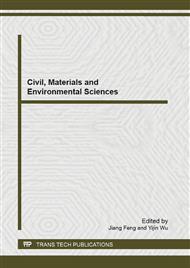p.249
p.257
p.262
p.268
p.272
p.278
p.284
p.290
p.300
Water-Fertilizer Coupling Effects and Efficient Utilization under Peanut-Millet Interplanting Conditions
Abstract:
In this study, the results showed that water is the most important factor to affect crop yields and optimum soil moisture is lower under the conditions of peanut-and-millet interplanting. Thus, peanut-and-millet interplanting is generally able to fit most of the semi-arid region. In the interaction of various factors, the coupling effect of water and phosphorus was stronger than the coupling effect of fertilizers, following by the coupling effect of water and nitrogen. Among peanuts factors of water, nitrogen, and multi-factorial interaction of water, nitrogen, and phosphorus, water and nitrogen showed a negative effect, whereas the two-factor interactions had a positive effect. There were some differences between peanut and millet in the need for water and fertilizer, in which peanut required more nitrogen and millet needed slightly higher soil moisture and phosphorus. When other factors were in rich level, both of the optimal value for single factors of water, nitrogen, and phosphorus and the optimal value for two-factor interactions of water-nitrogen, water-phosphorus, and nitrogen-phosphorus, were higher than the optimal value for the interaction of water, nitrogen, and phosphorus. The tiny demand difference on moisture in peanut-millet interplanting could be compromised by configuring a reasonable interplanting population structure and the corresponding demand difference on fertilizer could be resolved by uneven crop planting strips. Under the condition of water-nitrogen-phosphorus interaction, the soil moisture content optimal for peanut accounted for 57.3% of the field capacity, and the related appropriate application rates of nitrogen and phosphorus were 0.98 g/pot (81.18 kg/hm2) and 0.39g/pot (32.18 kg/hm2), respectively. Likewise, the soil moisture content optimal for millet was 59.1% of the field capacity, and the counterpart appropriate application rates of nitrogen and phosphorus were 0.57 g/pot (47.03 kg/hm2) and 0.45g / pot (37.13 kg/hm2), respectively.
Info:
Periodical:
Pages:
272-277
Citation:
Online since:
August 2013
Authors:
Keywords:
Price:
Сopyright:
© 2013 Trans Tech Publications Ltd. All Rights Reserved
Share:
Citation:


